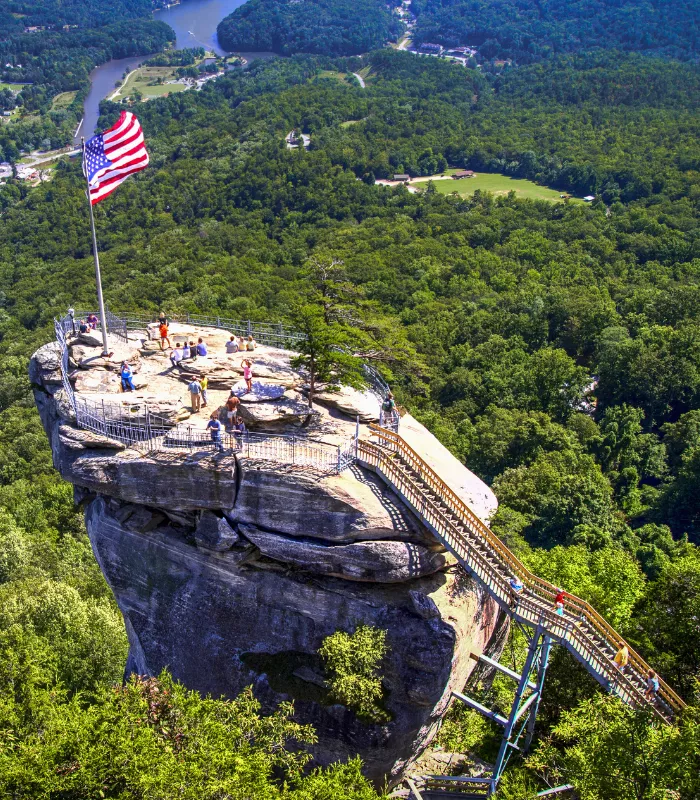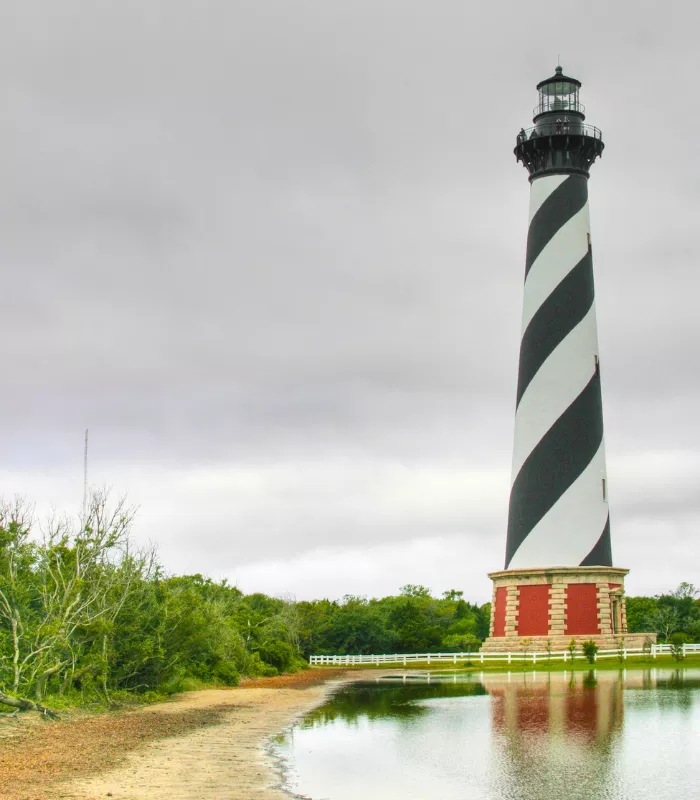Every state has those places that sound amazing in brochures but leave you wondering if you accidentally stumbled into a elaborate prank.
North Carolina’s tourist industry has mastered the art of turning ordinary objects into “world’s largest” attractions.
You know the type – giant furniture, oversized kitchen utensils, and mysterious houses that defy basic physics.
These places survive on one thing: your willingness to believe that bigger automatically means better.
1. The Biltmore Estate, North Carolina

The Biltmore Estate in Asheville claims to be America’s largest home. Built by George Washington Vanderbilt II, this 250-room mansion sits on an 8,000-acre estate.
The house took six years to build and was completed in 1895. It features 35 bedrooms, 43 bathrooms, and 65 fireplaces.
Admission prices can easily reach $75 per adult during peak seasons. That’s before you pay for parking, tours, or food.
Why It’s On This List: You can easily forget to enjoy the experience when you’re constantly worried about the mounting costs.
2. World’s Largest Chest of Drawers, North Carolina
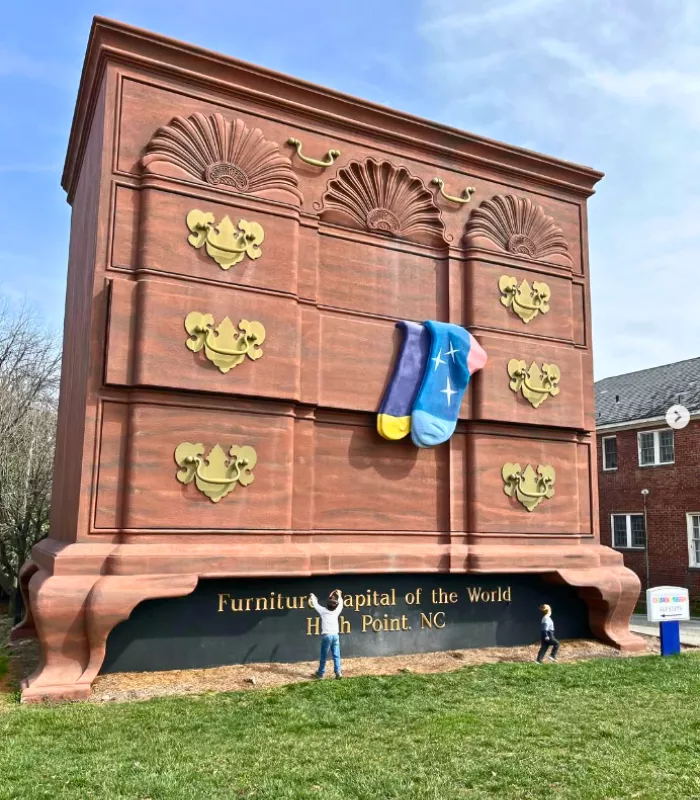
High Point calls itself the “Furniture Capital of the World.” To prove it, they built a giant chest of drawers that stands 40 feet tall.
This roadside attraction was built in the 1920s to promote the city’s furniture industry. It’s basically a tall building shaped like furniture.
You’re better off spending your time at actual furniture showrooms if you’re interested in home decor. The giant chest offers little more than a quick photo opportunity.
Why It’s On This List: It’s a gimmicky roadside attraction that takes advantage of tourists looking for unique experiences.
3. World’s Largest Duncan Phyfe Chair, North Carolina

Thomasville built this 30-foot-tall chair to honor furniture maker Duncan Phyfe. The chair sits in the town center and weighs about 15 tons.
Local couples often take prom and wedding photos in front of it. The chair was built in 1951 as part of the town’s furniture heritage celebration.
It’s just a big chair. There’s no museum, no educational component, and no real reason to make a special trip.
Why It’s On This List: Tourists often drive miles out of their way for what amounts to a 5-minute photo stop.
4. World’s Largest Frying Pan, North Carolina
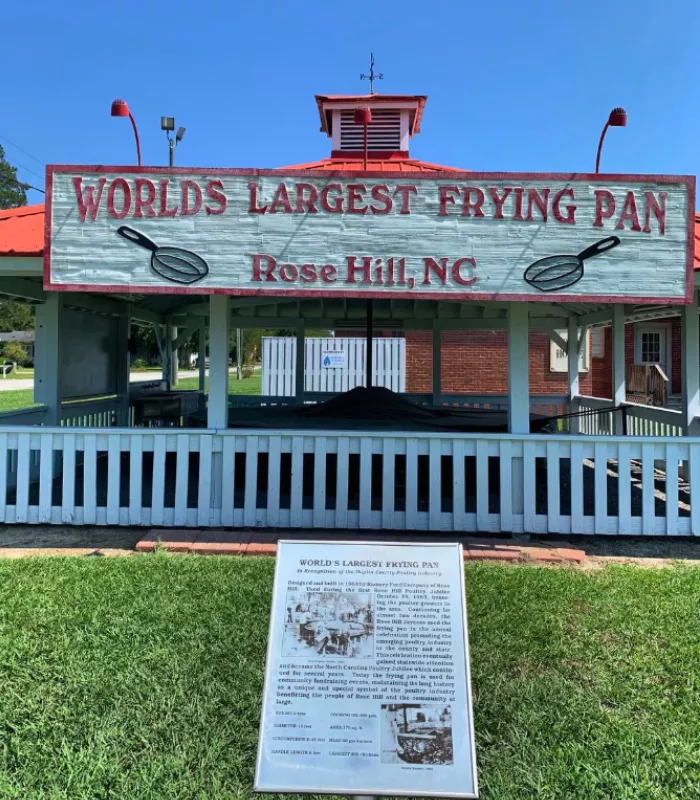
Rose Hill’s claim to fame is a 15-foot diameter frying pan that weighs 2 tons. They built it to celebrate their annual Poultry Jubilee festival.
The pan can supposedly cook 365 chickens at once. It was constructed in 1969 and sits in the town square.
That’s why many visitors feel disappointed after making the drive. It’s literally just a big pan with no interactive elements or educational value.
Why It’s On This List: The novelty wears off in about 30 seconds, leaving tourists wondering why they bothered stopping.
5. World’s Largest Ten Commandments, North Carolina

Murphy features a massive stone monument displaying the Ten Commandments. The structure stands 33 feet tall and weighs over 100 tons.
It was erected in 2006 by a local businessman who wanted to make a religious statement. The monument sits on private property near the town center.
Many visitors expect a more comprehensive religious or historical experience. Instead, they get a single monument with limited context.
Why It’s On This List: Tourists often feel misled by the “world’s largest” claim when the experience is so limited.
6. Shangri La Stone Village, North Carolina
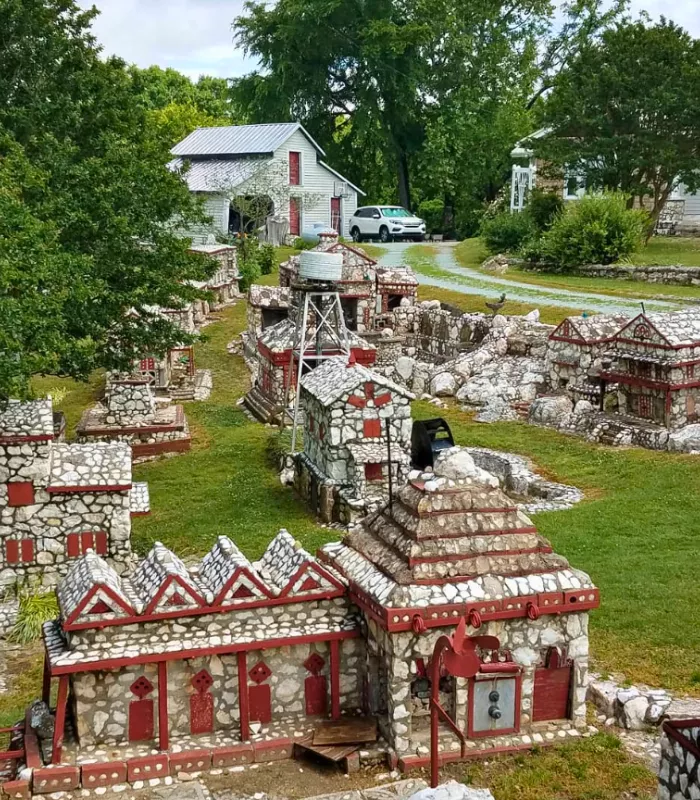
This roadside attraction in Prospect Hill features a collection of stone buildings and sculptures. The site was created by one man over several decades as his personal art project.
The village includes miniature castles, bridges, and various stone structures. It’s open to the public but lacks professional maintenance or clear signage.
You’re better off visiting established sculpture gardens or art museums. The site often feels more like someone’s backyard project than a legitimate attraction.
Why It’s On This List: Visitors pay admission fees for what’s essentially an unfinished personal hobby project.
7. Giant Concrete Legs, North Carolina
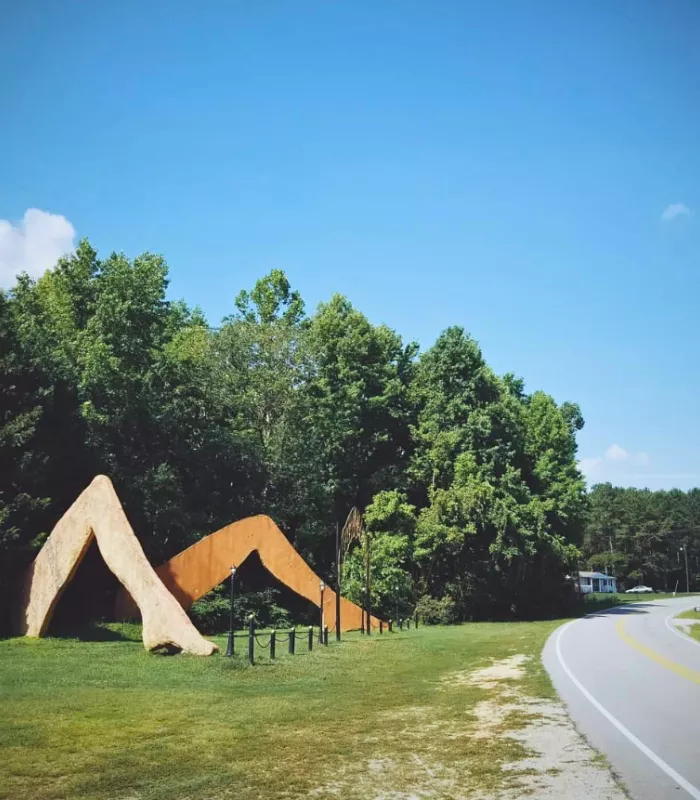
Henderson features a pair of giant concrete legs sticking out of the ground. These 20-foot-tall legs were created as part of an art installation in the 1980s.
The legs belong to a buried giant figure, with only the feet and lower legs visible above ground. They’re located in a small park downtown.
There’s no story, no context, and no additional attractions nearby. Most people take a quick photo and leave within minutes.
Why It’s On This List: Tourists expect more substance from roadside attractions than just random concrete body parts.
8. Belhaven Memorial Museum, North Carolina
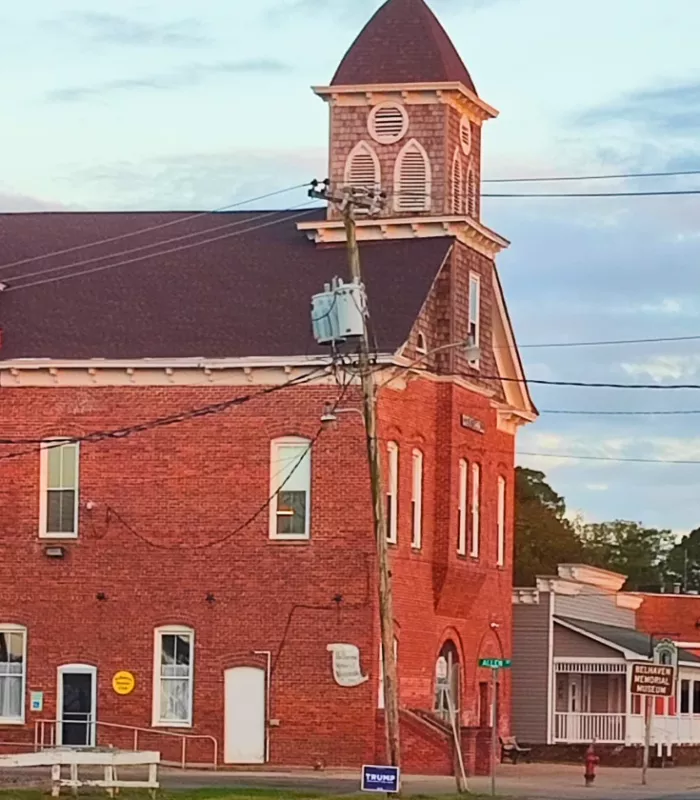
This small-town museum claims to house over 30,000 items collected by one woman over her lifetime. Eva Blount Way collected everything from buttons to preserved snakes.
The museum opened in 1965 and features an eclectic mix of random objects. You’ll find everything from funeral home fans to pickled animals in jars.
That’s why many visitors feel overwhelmed rather than educated. The sheer volume of unorganized items makes it difficult to appreciate anything specific.
Why It’s On This List: The museum feels more like a cluttered attic than a professional cultural institution.
9. Vollis Simpson Whirligig Park, North Carolina

Wilson created this park to display the kinetic sculptures of local artist Vollis Simpson. The park features large metal sculptures that spin in the wind.
Simpson was a farmer and mechanic who created these whirligigs as a hobby. The city moved his creations to a dedicated park after his death.
Many of the sculptures don’t work properly anymore. Maintenance issues mean visitors often see static displays instead of moving art.
Why It’s On This List: Poor maintenance has turned what should be dynamic art into expensive lawn ornaments.
10. Satellite Park, North Carolina

Durham’s Satellite Park features a collection of space-themed playground equipment and sculptures. The park was designed to celebrate the space age in the 1960s.
The main attraction is a large rocket-shaped structure that children can climb. The park also includes various space-themed play equipment.
You’re better off visiting actual space museums or planetariums for educational value. This park offers little beyond basic playground equipment with a space theme.
Why It’s On This List: Tourists expecting a space museum or educational experience find only a dated playground with minimal space-related content.
11. Mystery Hill, North Carolina
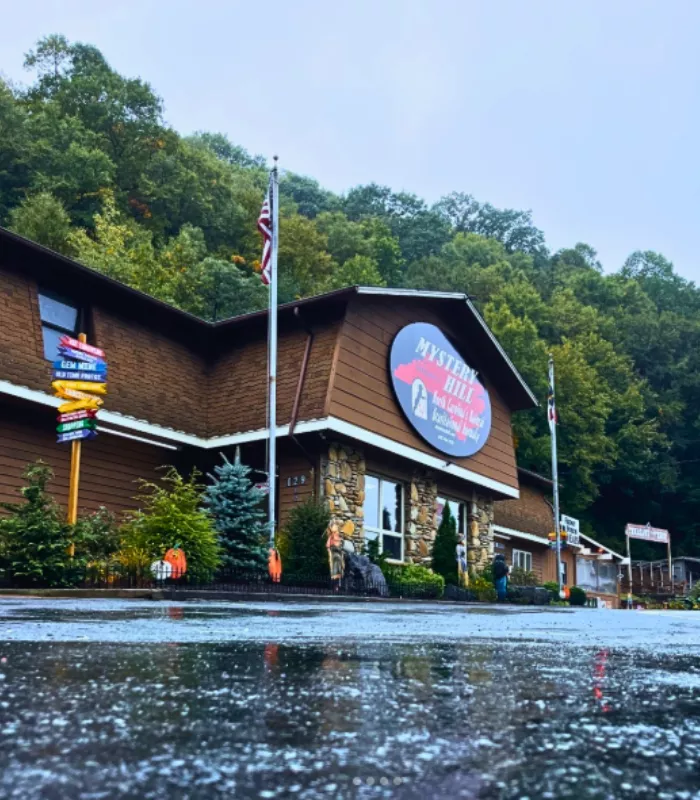
Mystery Hill in Blowing Rock claims to defy gravity with its tilted buildings and optical illusions. The attraction opened in 1949 and features a house where water appears to flow uphill.
Visitors pay admission to walk through tilted rooms and experience “gravitational anomalies.” The site includes a gift shop and various carnival-style demonstrations.
It’s all basic optical illusions that you can find explained online. The mystery disappears once you understand the simple physics involved.
Why It’s On This List: Tourists pay premium prices for cheap tricks that lose their appeal once you realize how they work.
12. Tweetsie Railroad, North Carolina

This Wild West theme park in Blowing Rock features a narrow-gauge railroad and cowboy shows. The park opened in 1957 and targets families with young children.
The main attraction is a 3-mile train ride with staged train robberies and gunfights. The park also includes carnival rides and gift shops.
That’s why many adults without small children feel out of place. The shows are clearly designed for elementary school kids, not mature audiences.
Why It’s On This List: Adults often feel they’ve overpaid for entertainment that’s too juvenile for their tastes.
13. Fontana Dam Visitor Center, North Carolina
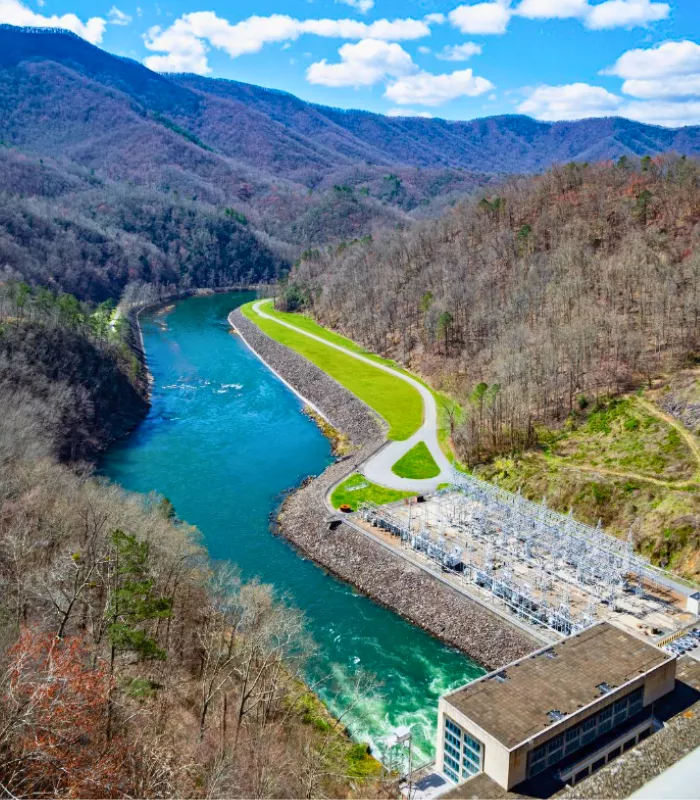
The Tennessee Valley Authority built this dam in the 1940s and created a visitor center to showcase the engineering feat. The dam stands 480 feet tall and was once the tallest in the eastern United States.
The visitor center features exhibits about hydroelectric power and regional history. You can take guided tours of the dam structure during certain seasons.
The exhibits feel outdated and the tours are often cancelled due to security concerns. Many visitors find the experience less impressive than expected.
Why It’s On This List: The attraction promises engineering marvels but delivers mostly static displays and limited access.
14. House in the Horseshoe, North Carolina

This historic house near Sanford claims to be where a Revolutionary War battle took place in 1781. The house features bullet holes allegedly from the skirmish.
The site includes the original house and a small visitor center with period artifacts. Guided tours explain the battle and the house’s colonial history.
You’re better off visiting larger Revolutionary War sites with more comprehensive exhibits. This location offers limited historical context and few interactive elements.
Why It’s On This List: Visitors expecting a major historical experience find only a single house with minimal interpretation.
15. Judaculla Rock, North Carolina
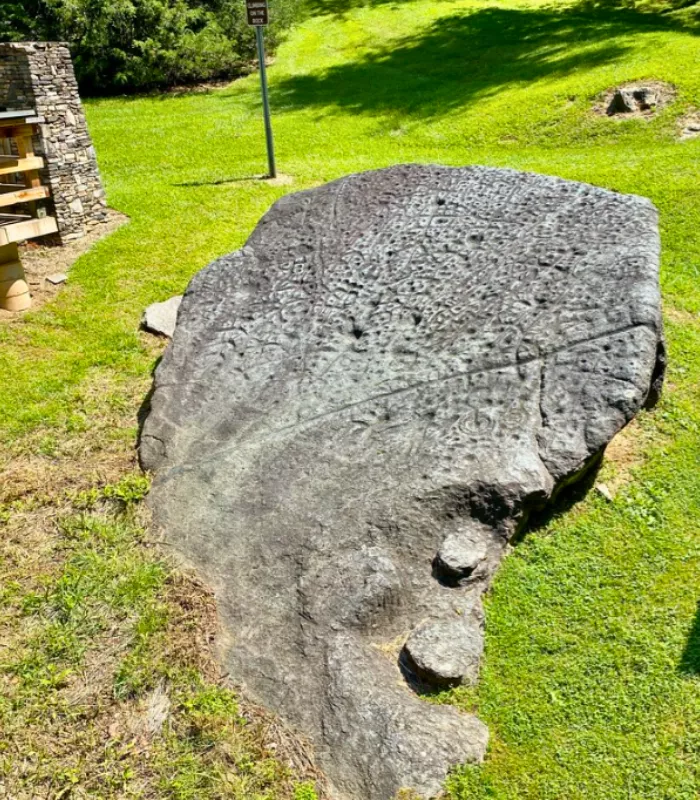
This large soapstone boulder near Cullowhee features ancient petroglyphs created by Cherokee ancestors. The rock contains over 1,500 carved symbols and figures.
The site is considered sacred by the Cherokee people and represents one of the largest petroglyph collections in the Southeast. A small parking area provides access to the rock.
There’s no visitor center, no interpretation, and no protection from weather. Many of the carvings are difficult to see without proper lighting.
Why It’s On This List: Tourists struggle to appreciate the historical significance without proper educational materials or guided interpretation.
16. Korner’s Folly, North Carolina
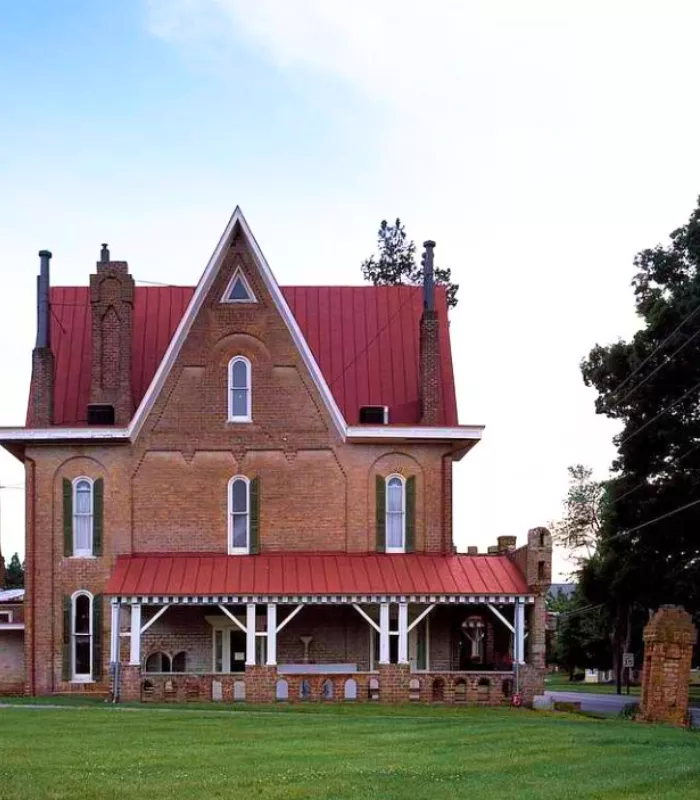
This unusual house in Kernersville was built in the 1880s by Jule Korner as his personal residence and business. The 22-room house features seven levels and no two rooms are the same size.
Korner designed the house to showcase his interior decorating business. Each room demonstrates different design styles and architectural features.
That’s why many visitors feel confused rather than impressed. The house lacks a coherent design theme, making it feel more chaotic than artistic.
Why It’s On This List: The house’s eccentric design appeals more to architecture students than general tourists looking for entertainment.
17. Sliding Rock, North Carolina
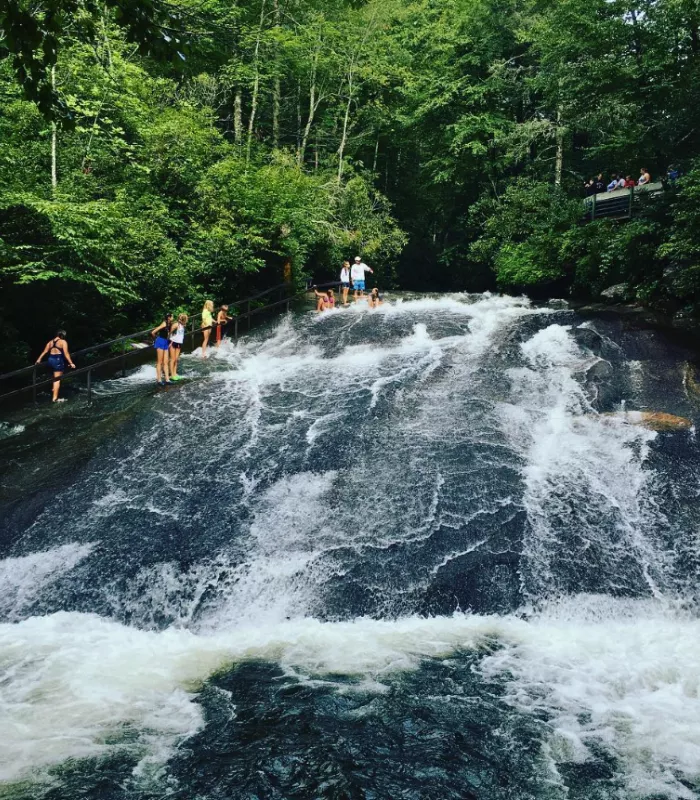
This natural water slide near Brevard attracts thousands of visitors each summer. The 60-foot rock formation creates a natural slide into a deep pool below.
The Forest Service maintains the area and charges parking fees during peak season. Lifeguards are on duty during busy periods to ensure safety.
The water is extremely cold year-round, and the rocks can be slippery and dangerous. Many visitors leave disappointed after a brief, uncomfortable experience.
Why It’s On This List: Tourists often underestimate how cold and potentially dangerous the natural slide can be.
18. Grandfather Mountain Mile High Swinging Bridge, North Carolina
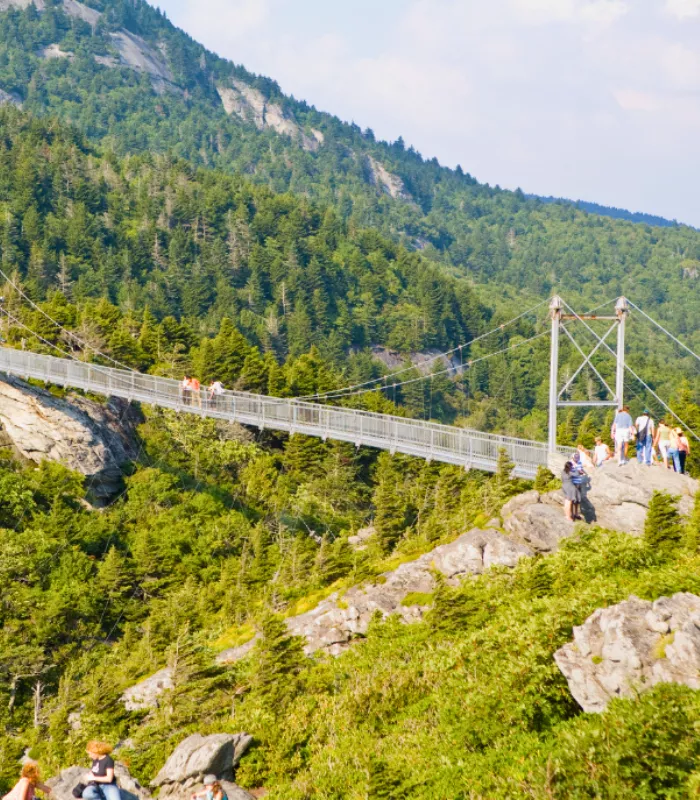
This suspension bridge connects two peaks of Grandfather Mountain and sits 5,280 feet above sea level. The bridge opened in 1952 and spans 228 feet across a deep gorge.
Visitors pay admission to access the bridge and enjoy mountain views. The site also includes a nature museum and hiking trails.
You’re better off finding free mountain overlooks with similar views. The bridge experience lasts only a few minutes but costs the same as a full day attraction.
Why It’s On This List: The high admission price doesn’t match the brief experience of walking across a short bridge.
19. Chimney Rock State Park, North Carolina
This granite monolith rises 315 feet above the Rocky Broad River and offers panoramic views of the surrounding mountains. The rock formation was featured in the movie “The Last of the Mohicans.”
Visitors can hike to the top or take an elevator built inside the mountain. The park includes hiking trails and a visitor center with educational exhibits.
The elevator ride costs extra and the hiking trails can be crowded during peak seasons. Many visitors feel rushed through the experience.
Why It’s On This List: The combination of admission fees, parking costs, and elevator charges can make a simple hike surprisingly expensive.
20. Cape Hatteras Lighthouse, North Carolina
This 208-foot lighthouse on the Outer Banks is the tallest brick lighthouse in North America. Built in 1870, it features distinctive black and white spiral stripes.
The lighthouse was moved 2,900 feet inland in 1999 to protect it from beach erosion. Visitors can climb the 248 steps to the top during certain seasons.
That’s why many visitors feel disappointed by the limited climbing schedule and crowded conditions. The experience often involves long waits for a brief view from the top.
Why It’s On This List: Tourists travel long distances only to find the lighthouse closed for climbing or overcrowded with limited viewing time.
- themanual.com – The worst tourist trap in every U.S. state, according to new data
- k1047.com – Here’s North Carolina’s Biggest Tourist Trap
- charlotterestaurantweek.iheart.com – North Carolina Destination Named ‘Most Boring Tourist Trap
- islands.com – North Carolina’s Tourist Trap In Asheville Earned An Unfavorable Spot Among The Most Overpriced In The World
- mentalfloss.com – The World’s Worst Tourist Traps in 2025, According to Visitor Reviews
- foxsportsradiocharlotte.com – 9 Peculiar Roadside Attractions You’ll Find In North Carolina
- businessinsider.com – The worst tourist trap in every state
- bestlifeonline.com – The Biggest Tourist Trap in Every State
- stacker.com – Tourist Traps to Avoid in Every State
